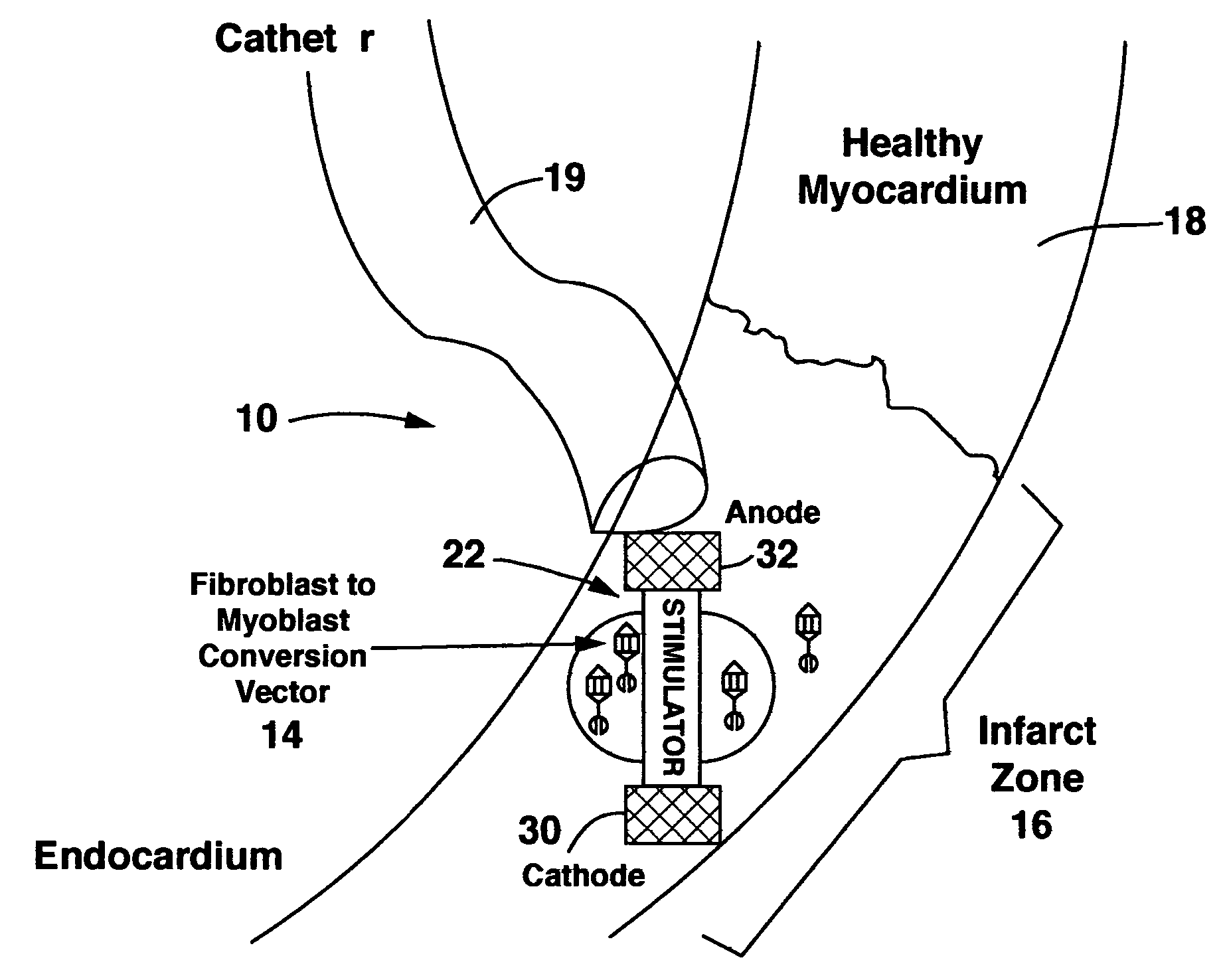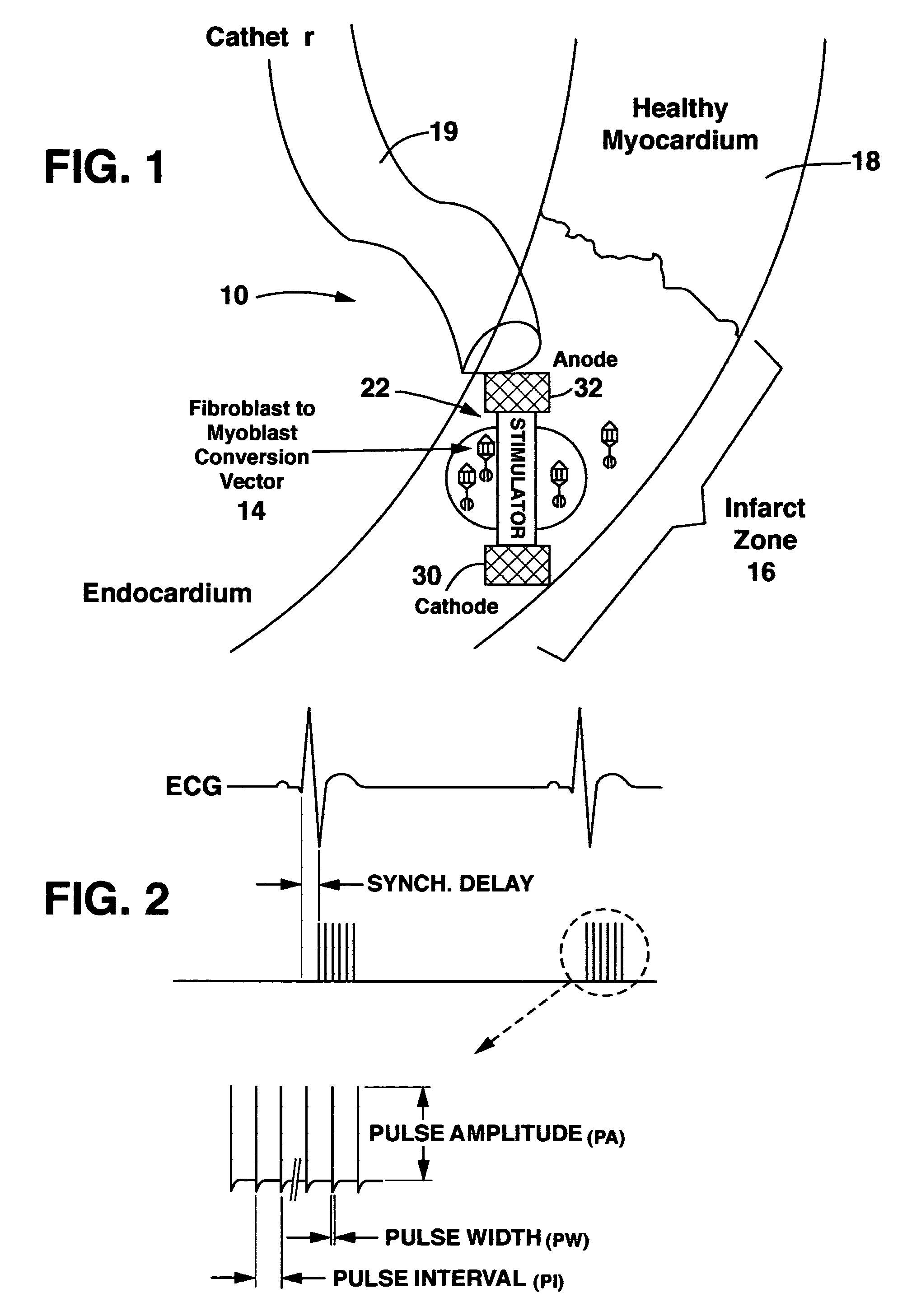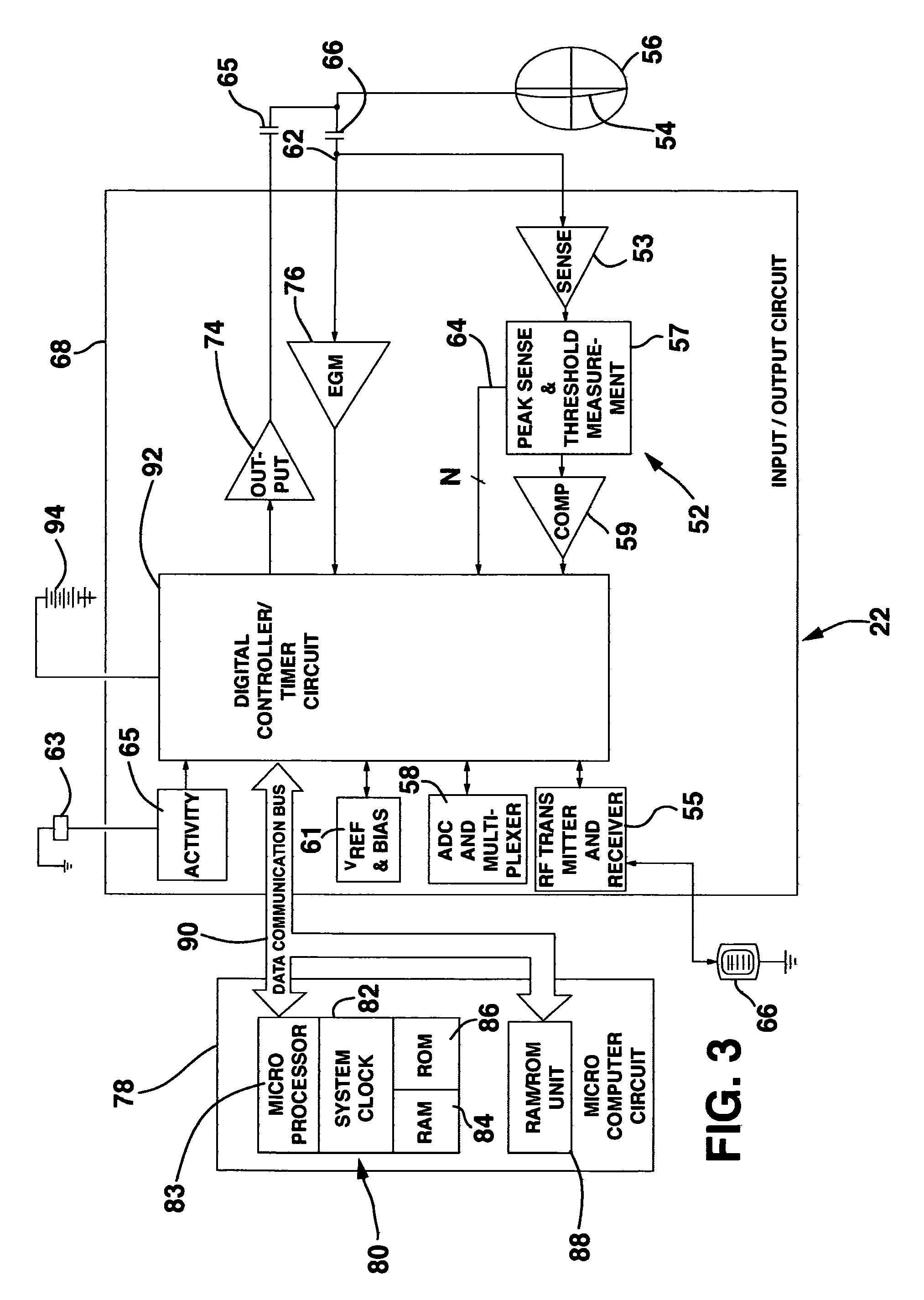Method and system for myocardial infarction repair
a myocardial infarction and system technology, applied in the field of methods and implantable systems, can solve the problems of creating electrical abnormalities, a 4–6-time higher risk of heart failure in the event of ami, and no current or proposed therapy for myocardial necrosis
- Summary
- Abstract
- Description
- Claims
- Application Information
AI Technical Summary
Benefits of technology
Problems solved by technology
Method used
Image
Examples
example 1
Transformation of Fibroblasts in situ and Electrical Stimulation
[0102]Adenovirus expressing myogenin (Myogen adenovirus / cDNA, which can be produced according to the method described by Murry et al., J. Clin. Invest., 98, 2209–2217 (1196)) was injected directly to the myocardium using a 100 microliter syringe. 109 pfu (pfu-plaque forming units-one pfu is approximately 50 adenovirus particles) were diluted with saline to form a 100 microliter solution. This solution was kept on dry ice until the injection, and delivered in four equal amounts to the perimeter of the infarct zone, 90 degrees apart.
[0103]A histopathological assessment of the treated tissue was done to assess the extent of fibroblast transformation. Tissue was processed for histology and stained with H&E and Masson's Trichrome according to standard methods.
[0104]Immunohistochemical staining was also done to determine whether there was myogenin expression in the treated tissue. Eight m frozen sections were cut from the tis...
example 2
Injection of Contractile Cells and Electrical Stimulation in Canines
Growth and Passage Information for Skeletal Myoblast Cells
1. Growth Medium Formulation:
[0107]81.6% M199 (Sigma, M-4530)[0108]7.4% MEM (Sigma, M-4655)[0109]10% Fetal Bovine Serum (Hyclone, Cat.# A-1115-L)[0110]1×(1%) Penicillin / Streptomycin (Final Conc. 100,000 U / L Pen. / 10 mg / L Strep., Sigma, P-0781).
2. Cell Passage Information:[0111]A. Seeding densities of 1×104 cells / cm2 will yield an 80% confluent monolayer in approximately 96 hours.[0112]B. Split ratios of 1:4–1:6 will yield a confluent monolayer within 96 hours.[0113]C. Do not allow the cells to become confluent. Cell to cell contact will cause the cells to differentiate into myotubes.
3. Passage Information:
[0114]
Flask Sizeml of HBSSml of Trypsin Solutionml of Media / FlaskT-253310T-755520–35T-15010–1510–1540–60T-22515–2515–25 60–125[0115]A. Remove culture medium from T-flask.[0116]B. Add back the appropriate amount of Hank's Balanced Salt Solution (HBSS).[0117]C....
PUM
| Property | Measurement | Unit |
|---|---|---|
| time | aaaaa | aaaaa |
| concentration | aaaaa | aaaaa |
| diameter | aaaaa | aaaaa |
Abstract
Description
Claims
Application Information
 Login to View More
Login to View More - R&D
- Intellectual Property
- Life Sciences
- Materials
- Tech Scout
- Unparalleled Data Quality
- Higher Quality Content
- 60% Fewer Hallucinations
Browse by: Latest US Patents, China's latest patents, Technical Efficacy Thesaurus, Application Domain, Technology Topic, Popular Technical Reports.
© 2025 PatSnap. All rights reserved.Legal|Privacy policy|Modern Slavery Act Transparency Statement|Sitemap|About US| Contact US: help@patsnap.com



